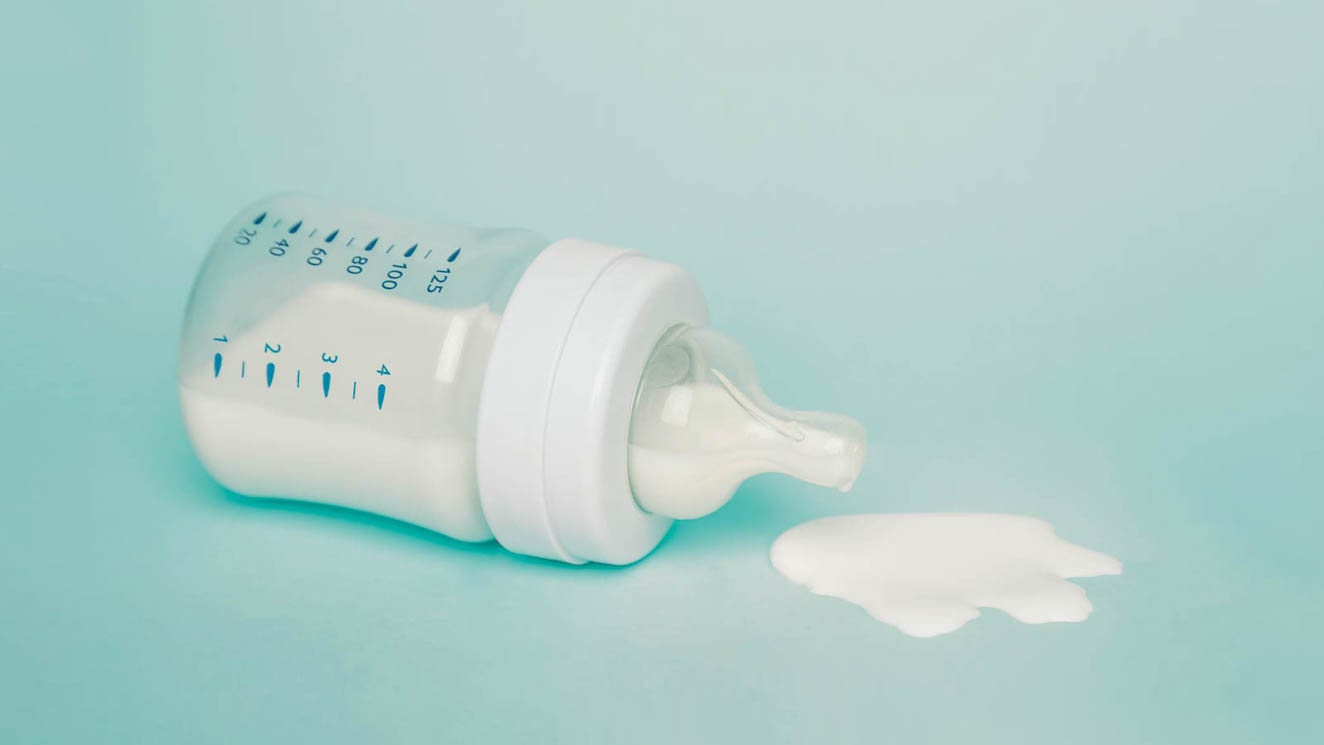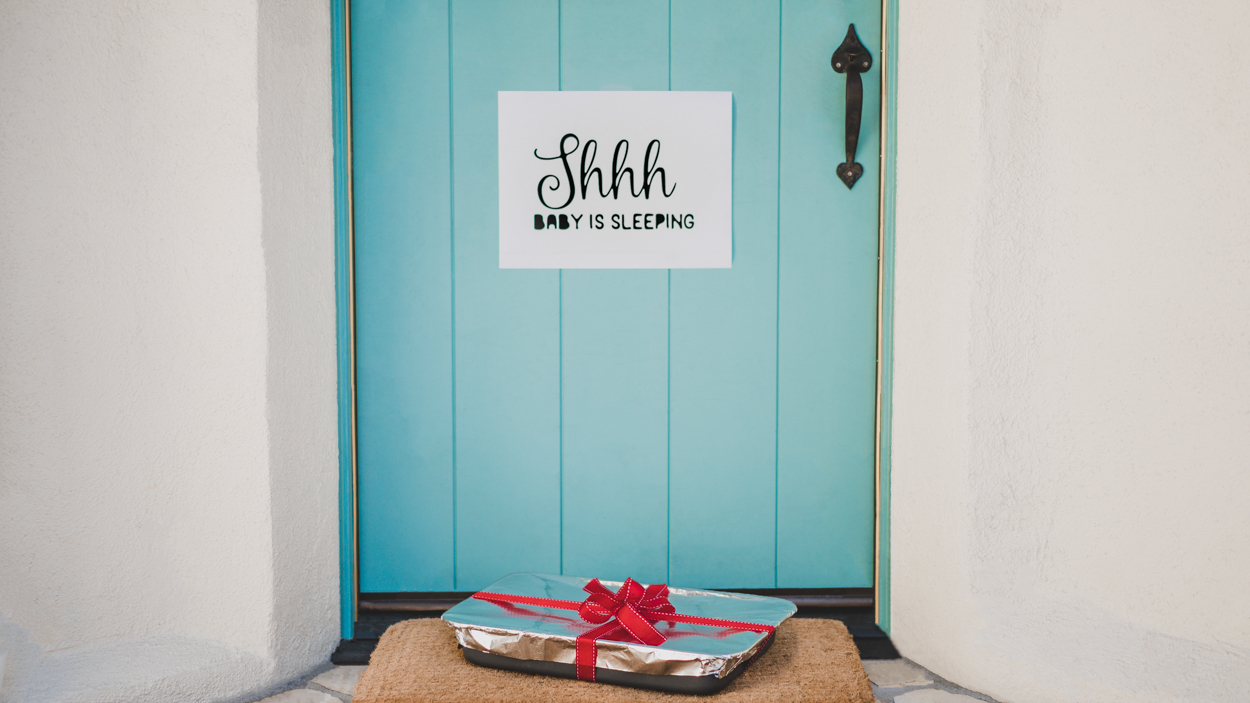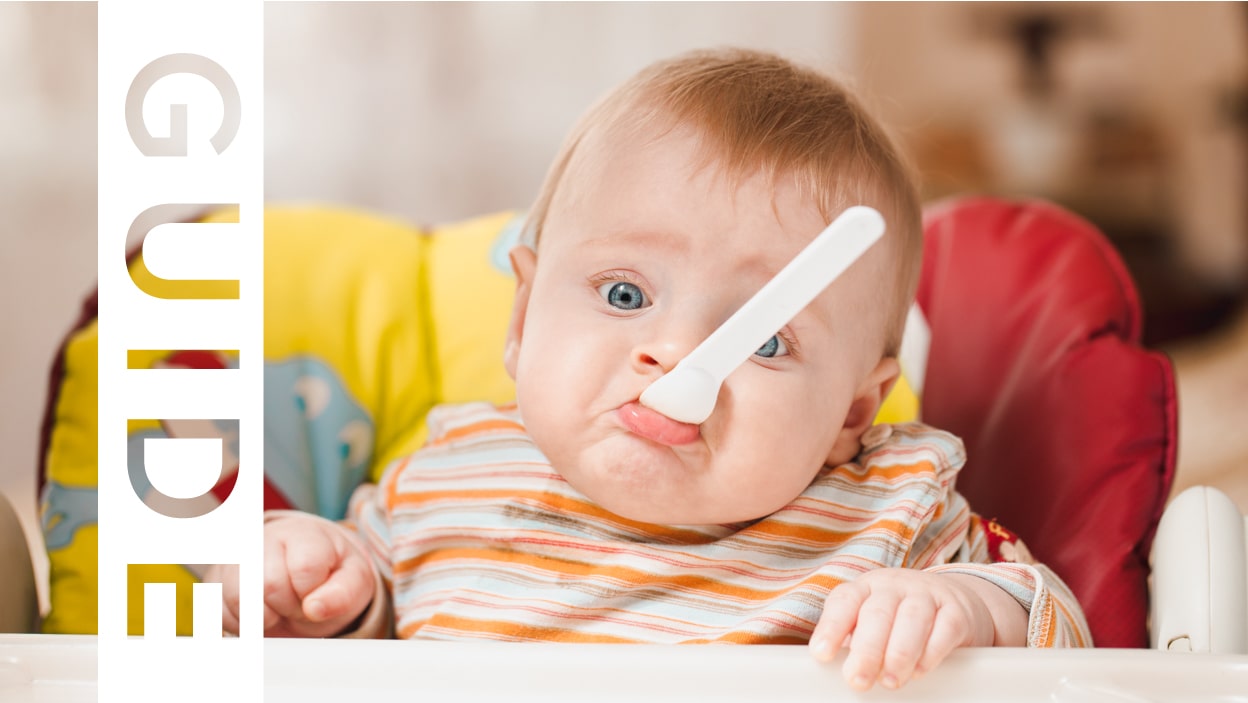

Whether you plan to formula feed or have that baby attached to your boob 24/7, you’re going to want to have some bottles on hand — because at some point you’re going to need to unlatch that kid so you can shower, shop, or stuff your face with messy tacos.
Some bottles are super simple with few parts (body, neck, nipple) while others have valves that are supposed to reduce colic and gas. These days, every half-decent bottle on the market is BPA free, and most brands offer “slow-flow” nipples for newborns and faster flow nipples for older babies who can take more in more quickly. Some brands even have compatible sippy-style nipples to help make it easy to transition baby to a cup.
Our picks…
Is it a bottle or a breast? Only you will know!
Pros: Okay, not really on the whole bottle vs. breast thing, it’s definitely a bottle. But these bottles are made to mimic the natural shape of a breast, and they may be a good option for babies who are mostly breastfed and only have the occasional bottle — or are resistant to one all together. Thanks to an “advanced anti-colic valve” that’s built into the side of the nipple, they’re supposed to help reduce gas, and since they have just three parts, they’re easy enough to clean in the dishwasher or by hand.
Cons: None.
These popular bottles are great for colicky babies. Unfortunately, they’re not so great to clean.
Pros: All your mom friends who obsessively read every review of every baby product ever probably ended up with these bottles. And for good reason. Yes, of course, they’re free of the weird plastic toxins. But thanks to a couple extra parts on the inside that manage air flow, they’re also supposed to offer baby a more breast-like feeding experience, reduce tummy upsets (colic, spit-up, gas, etc.), and even help prevent fluid buildup in the ear.
Cons: Thanks to those couple extra parts, these bottles are a serious pain in the bum to clean. Said parts are dishwasher safe. But still — all the parts! And if you don’t get the lids on right and tight, they can leak. As they say on the Facebook, it’s complicated.
If you’re not using a Medela pump, you can probably pass on these basic bottles.
Pros: These bottles are compatible with all styles of Medela breast pumps — so if you’re pumping milk for a bottle baby will take immediately (and not transferring it to zip-close bags to freeze) these will save you a ton of time — and possibly some spilled milk.
Cons: Do you need a revolutionary bottle? If you want any bells or whistles, you’ll find these overly basic — especially if you don’t use a Medela pump.
A durable stainless-steel bottle that will grow with your baby.
Pros: This bottle is durable (though if you drop it juuuuust the right way, you can smash it enough to pop the bottom and make it unstable). And because there are compatible sippy-style and straw tops, it’s great for transitioning to a cup as baby grows. Since it’s made of stainless steel, you don’t have to worry about whatever still-undiscovered toxins may be lurking in plastic these days, and it retains temperature well.
Cons: These are pricey, and it’s hard to see how much is left in the bottle while baby’s eating. But if you manage to not leave it at a park or playdate, you’ll eventually get your money’s worth by using the transitional lids.











